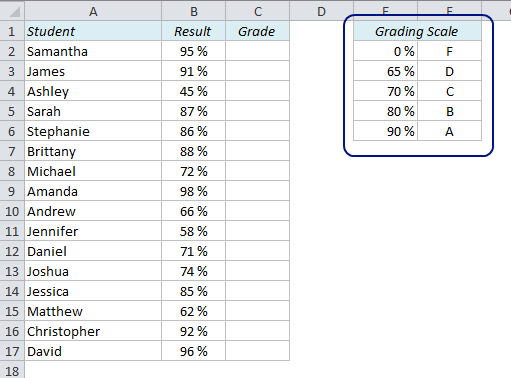How can we calculate the grades (for example A-F) in Excel if we have the test results as numbers? In the example below, a score of 90% or higher is an A, 80-89% is a B, 70-79% is a C, 65-69% is a D and less than 65% is an F.
The first thing we should do is to organize this information in a lookup table:



